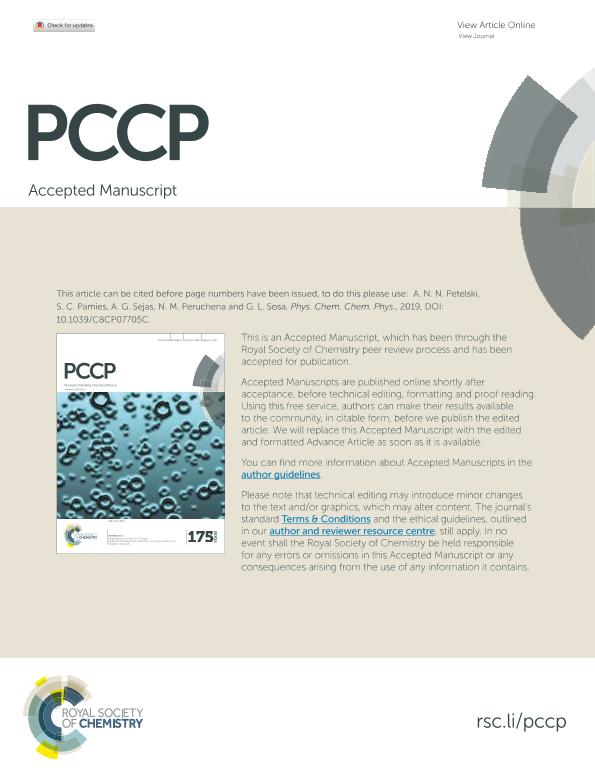Artículo
Impact of Confinement in Multimolecular Inclusion Compounds of Melamine and Cyanuric acid
Petelski, Andre Nicolai ; Pamies, Silvana Carina; Sejas, Agustín Gabriel; Peruchena, Nelida Maria
; Pamies, Silvana Carina; Sejas, Agustín Gabriel; Peruchena, Nelida Maria ; Sosa, Gladis Laura
; Sosa, Gladis Laura
 ; Pamies, Silvana Carina; Sejas, Agustín Gabriel; Peruchena, Nelida Maria
; Pamies, Silvana Carina; Sejas, Agustín Gabriel; Peruchena, Nelida Maria ; Sosa, Gladis Laura
; Sosa, Gladis Laura
Fecha de publicación:
02/2019
Editorial:
Royal Society of Chemistry
Revista:
Physical Chemistry Chemical Physics
ISSN:
1463-9076
Idioma:
Inglés
Tipo de recurso:
Artículo publicado
Clasificación temática:
Resumen
Supramolecular cavities can be found in clathrates and self-assembling capsules. In these computational experiments, we studied the effect of folding planar hydrogen-bonded supramolecules of melamine (M) and cyanuric acid (CA) into stable cage-like quartets. Based on dispersion-corrected density functional theory calculations at the B97XD/6-311++G(d,p) level, we show the flexibility of M and CA molecules to form free confined spaces. Our bonding analysis indicates that only CA can form a cage which is more stable than their planar systems. We then studied the capacity of the complexes to host ionic and neutral monoatomic species like Na+, Cl- and Ar. The encapsulation energies range from -2 to -65 kcal/mol. A detailed energy decomposition analysis (EDA) support the fact that the triazine ring of CA is superior to the M one to capture chloride ions. In addition, the EDA and the topology of the electron density, by means of the Atoms in Molecules (AIM) theory and electrostatic potential maps, reveal the nature of the host-guest interactions in the confined space. The CA cluster appears to be the best multimolecular inclusion compound because it can host the three species and keep its cage structure, and therefore could also act as a dual receptor of the ionic pair Na+Cl-. We think these findings could inspire the design of new heteromolecular inclusion compounds based on triazines and hydrogen bonds
Palabras clave:
MELAMINE
,
CYANURIC ACID
,
SUPRAMOLECULES
,
INCLUSION COMPOUNDS
Archivos asociados
Licencia
Identificadores
Colecciones
Articulos(CCT - NORDESTE)
Articulos de CTRO.CIENTIFICO TECNOL.CONICET - NORDESTE
Articulos de CTRO.CIENTIFICO TECNOL.CONICET - NORDESTE
Citación
Petelski, Andre Nicolai; Pamies, Silvana Carina; Sejas, Agustín Gabriel; Peruchena, Nelida Maria; Sosa, Gladis Laura; Impact of Confinement in Multimolecular Inclusion Compounds of Melamine and Cyanuric acid; Royal Society of Chemistry; Physical Chemistry Chemical Physics; 21; 16; 2-2019; 8205-8214
Compartir
Altmétricas



